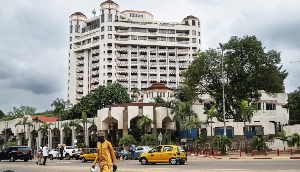The Ministry of the Economy, Planning and Regional Development (MINEPAT) has come up with a three-year plan to guide development endeavours through which sustainable socio-economic development could be attained. The plan, described as a coordination tool to revive sustainable growth, designers say, is a response to the Head of State's fervent wish, expressed in several speeches at varied occasions, to catapult Cameroon into a middle income economy (emergence) by 2035.
It's Place in Development
The plan is expected to serve as a coordination tool of government action and follow up of defined activities geared towards getting the country out of the economic quagmires of the yesteryears. It helps in identifying sectors and activities that can considerably contribute as soon as possible in accelerating economic growth. The triennial plan also helps in harmonising growth-oriented activities in the various sectors as outlined in the ten-year Growth and Employment Strategy Paper, mobilising and involving stakeholders to focus on the growth vision as well as serving as a follow up mechanism for the development policy.
Challenges to Surmount
Currently, the country's economy is characterised by incessant importation, even of food items that the country is endowed with potentials to produce beyond home consumption, the resultant effect on its trade balance and the poor nature of the small and medium-size enterprises and industries sector capable of creating jobs and wealth, among others. Designers say the plan strives to boost local production to feed the national and even international markets, reduce importations, notably foodstuffs, bridge demand-supply gap and in so doing stepping up the income of producers.
How to Go About It?
The plan sets out to directly follow up activities of the maize, rice, cassava, banana, plantain, sugar, cattle, poultry, pig and tourism sub-sectors. The goal is to increase the volume of agro-pastoral production. Other sectors like cocoa, coffee, cotton and wood will not be left out. Notably, the plan intends to take paddy and white rice production from 182,000 and 139,200 metric tons in 2012 to 256,200 and 205,000 metrics tons respectively by 2015. Chicken production, all things being equal, will also move from 61,000 metric tons in 2010 to 91,500 metric tons in 2015. Going by the plan, the processing capacities of still-to-be-identified and supported SMEs and SMIs, farmer cooperatives, federation of Common Initiative Groups will increase five-folds. The plan will among others put in place infrastructure to boost production processing and sale of products, ease the accessibility to production techniques and inputs as well as facilitate access to funding.
Infos Business of Friday, 19 April 2013
Source: Cameroon Tribune












